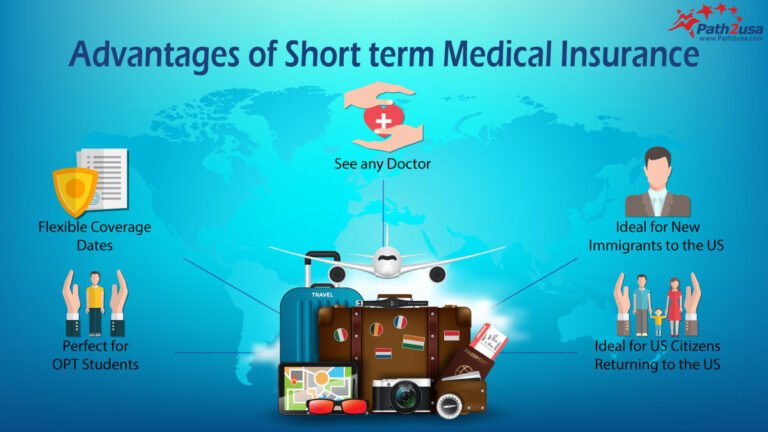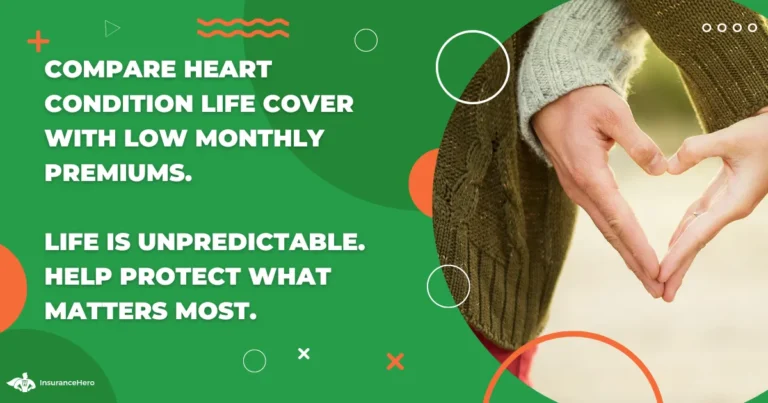Comprehensive Guide to Convertible Term Life Insurance Policies
Life insurance is a vital component of financial planning, providing security and peace of mind for families and individuals. One of the most versatile and beneficial types of life insurance is convertible term life insurance. In this guide, we will explore the ins and outs of convertible term life insurance policies, helping you understand their features, benefits, and how they can fit into your overall financial strategy.
What is Convertible Term Life Insurance?
Convertible term life insurance is a type of term life insurance policy that includes an option to convert to a permanent life insurance policy, such as whole life or universal life insurance, without undergoing a medical exam. This feature makes convertible term life insurance particularly attractive for individuals who anticipate changes in their health or financial situation over time.
Key Features of Convertible Term Life Insurance
- Term Length: Typically, convertible term life insurance policies offer coverage for a specified period, such as 10, 20, or 30 years.
- Conversion Option: Policyholders can convert their term policy to a permanent policy, usually before the end of the term or before a specified age, without providing evidence of insurability.
- Premiums: Initially, premiums for term life insurance are generally lower than for permanent life insurance. However, upon conversion, the premiums will increase to reflect the cost of the permanent policy.
- Death Benefit: The death benefit remains constant throughout the term of the policy, providing financial security for the beneficiaries.
Benefits of Convertible Term Life Insurance
Flexibility
One of the most significant advantages of convertible term life insurance is its flexibility. As your life circumstances change, so can your insurance policy. For instance, if you develop a health condition that makes obtaining new insurance difficult or expensive, you can convert your term policy to permanent coverage without a medical exam.
Cost-Effective
Convertible term life insurance starts with lower premiums compared to permanent life insurance. This makes it an affordable option for young families or individuals just starting their careers. Over time, as your financial situation improves, you can convert to a permanent policy that builds cash value.
Financial Security
The primary purpose of any life insurance policy is to provide financial security to your loved ones in the event of your death. Convertible term life insurance ensures that your beneficiaries receive a death benefit, helping them manage expenses and maintain their standard of living.
Tax Advantages
Life insurance policies offer several tax benefits. The death benefit paid to beneficiaries is generally tax-free, and if you convert to a permanent policy, the cash value grows tax-deferred. This can be a useful component of your long-term financial planning.
How to Choose a Convertible Term Life Insurance Policy
Selecting the right convertible term life insurance policy involves several considerations. Here are some key factors to keep in mind:
Evaluate Your Needs
First, assess your current and future financial needs. Consider factors such as your mortgage, children’s education expenses, and your spouse’s income. This will help you determine the amount of coverage you require.
Compare Policies
Not all convertible term life insurance policies are created equal. Compare the conversion options, premiums, and terms offered by different insurers. Pay attention to the maximum age for conversion and any restrictions that may apply.
Understand the Conversion Process
Ensure you understand how and when you can convert your policy. Some policies allow partial conversions, enabling you to convert a portion of your term coverage to permanent insurance while maintaining some term coverage.
Consult an Insurance Professional
Given the complexity of life insurance policies, it’s wise to consult with an insurance professional or financial advisor. They can help you navigate the options and select a policy that aligns with your long-term goals.
Common Misconceptions About Convertible Term Life Insurance
It’s Too Expensive
Many people believe that life insurance, particularly policies with conversion options, is prohibitively expensive. However, convertible term life insurance starts with lower premiums, making it accessible to a wide range of individuals.
Conversion is Complicated
While the idea of converting a term policy to a permanent one might seem complex, the process is typically straightforward. Most insurers provide clear guidelines and support to help policyholders through the conversion process.
Only for the Wealthy
Convertible term life insurance is a practical option for anyone seeking flexibility and financial security. It’s not just for the wealthy; it’s for anyone who wants to ensure their loved ones are protected, regardless of their current financial status.
Scenarios Where Convertible Term Life Insurance is Beneficial
Young Families
For young families, convertible term life insurance offers an affordable way to secure significant coverage. As the family’s financial situation improves, they can convert to a permanent policy to ensure long-term protection.
Career Starters
Individuals at the beginning of their careers often have limited budgets. Convertible term life insurance provides essential coverage without straining finances, with the option to upgrade as their income grows.
People with Changing Health Conditions
Health can change unexpectedly. Convertible term life insurance ensures that individuals can maintain coverage even if they develop health issues that would make new insurance prohibitively expensive or unavailable.
Estate Planning
For those involved in estate planning, convertible term life insurance can be a strategic tool. It allows them to lock in lower premiums initially and convert to a permanent policy that can help with estate liquidity and inheritance planning.
How Conversion Works
The conversion process is a crucial aspect of convertible term life insurance. Here’s a step-by-step overview:
Step 1: Review Your Policy
Before initiating a conversion, review your current term life insurance policy. Check for the conversion period, which is the timeframe during which you can convert your policy.
Step 2: Decide on Coverage Amount
Determine how much of your term coverage you want to convert. Some policies allow partial conversions, providing flexibility based on your financial needs and goals.
Step 3: Choose the Permanent Policy
Select the type of permanent life insurance you want to convert to, such as whole life or universal life. Each has its own features and benefits, so choose the one that best aligns with your long-term objectives.
Step 4: Notify Your Insurer
Inform your insurance company of your decision to convert. They will provide the necessary forms and instructions. You won’t need to undergo a medical exam, but you may need to complete some paperwork.
Step 5: Pay the New Premium
Upon conversion, your premiums will increase to reflect the cost of the permanent policy. Ensure you understand the new premium structure and budget accordingly.
Comparing Convertible Term Life Insurance with Other Types
Term Life Insurance
Standard term life insurance provides coverage for a specified period, such as 10, 20, or 30 years, with no option for conversion. It is the most straightforward and affordable type of life insurance but lacks the flexibility of conversion.
Whole Life Insurance
Whole life insurance offers lifelong coverage and includes a cash value component that grows over time. While it provides more benefits, it is also significantly more expensive than term life insurance.
Universal Life Insurance
Universal life insurance also offers lifelong coverage with flexible premiums and a cash value component. It provides more flexibility than whole life insurance but can be complex to manage due to its variable nature.
Convertible Term Life Insurance
Convertible term life insurance combines the affordability of term life insurance with the flexibility to convert to permanent coverage. It is an excellent choice for those who want to start with lower premiums and have the option to upgrade their coverage in the future.
Real-Life Examples of Convertible Term Life Insurance in Action
Example 1: The Young Professional
John, a 25-year-old professional, purchases a 20-year convertible term life insurance policy with a $500,000 death benefit. At age 35, John is diagnosed with a health condition. He decides to convert his term policy to a whole life policy to ensure lifelong coverage. This conversion allows him to maintain insurance coverage without a medical exam, providing peace of mind despite his health changes.
Example 2: The Growing Family
Emily and Mark, both in their early 30s, buy a 30-year convertible term life insurance policy to protect their young family. As their careers progress and their financial situation improves, they decide to convert part of their term policy to universal life insurance. This strategy allows them to build cash value while keeping some term coverage in place until their mortgage is paid off.
Example 3: The Pre-Retiree
Sarah, aged 50, has a 20-year convertible term life insurance policy. As she approaches retirement, she converts her policy to whole life insurance. This ensures she has permanent coverage that can be used for estate planning and to provide financial support to her grandchildren.
Frequently Asked Questions (FAQs)
Can I Convert My Policy Anytime?
Most convertible term life insurance policies have specific conversion periods, typically within the first half or two-thirds of the policy term. It’s essential to review your policy details to understand the exact timeframe.
Will My Premiums Increase Upon Conversion?
Yes, when you convert a term policy to a permanent policy, the premiums will increase. The new premium will be based on your age at the time of conversion and the type of permanent policy you choose.
Is a Medical Exam Required for Conversion?
No, one of the key benefits of convertible term life insurance is that you do not need to undergo a medical exam when converting your policy. This feature is particularly beneficial if your health has declined since you first purchased the policy.
What Happens if I Don’t Convert My Policy?
If you do not convert your term life insurance policy before the end of the term or conversion period, the policy will expire, and you will no longer have coverage. In this case, you would need to apply for a new policy, which could be more expensive and require a medical exam.
Can I Partially Convert My Policy?
Many convertible term life insurance policies allow partial conversions. This means you can convert a portion of your term coverage to permanent insurance while maintaining some term coverage. This option provides flexibility and can help manage premium costs.
Conclusion
Convertible term life insurance is a versatile and practical option for individuals seeking affordable life insurance with the flexibility to adapt to changing circumstances. By offering the option to convert to permanent coverage without a medical exam, it provides peace of mind and long-term financial security. Whether you are a young professional, a growing family, or planning for retirement, convertible term life insurance can be a valuable component of your financial strategy.
When considering a convertible term life insurance policy, it’s essential to evaluate your needs, compare options, and consult with a financial advisor to ensure you make the best choice for your situation. With careful planning, convertible term life insurance can help protect your loved ones and provide a solid foundation for your financial future.






